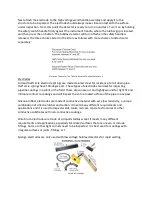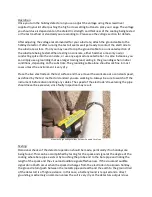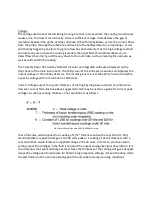
How to Use a Holiday Detector
Holiday Detection
The premature corrosion of a substrate is usually due to a coating failure which is largely from
flaws in the finished coating. Holiday tests are used to detect holes, known as holidays or
breaks, in a coating. Holiday testing allows the detection of even the smallest coating flaws
invisible to the naked eye.
Holiday detection equipment offered by USI is safer, faster and more reliable than ever before.
There are various kinds of holiday detectors on the market today, but high voltage holiday
tests, or porosity techniques, is ideal for inspecting pipelines and other protective coatings.
The Tinker & Rasor Model APS Holiday Detector is an all-purpose electrical inspection
instrument which maintains a given inspection voltage despite the electrical load on the circuit,
this is also known as DC pulse holiday detection. This specific model supplies 800V to 35kV in
one instrument with two ranges of 3,500V to 35,000V and a low range of 800V to 8,000V. It is
recommended for use on any pipe diameter as well as on flat surfaces.
Tinker & Rasor Model APS
Unpacking and Set-up
Inspection should be made upon receipt to ensure that all parts were received unscathed and
every piece of your equipment is in working order. First remove all accessories from the
shipping carton, then connect the high voltage wand handle to the front of the instrument and
ground cable to the detector handle by inserting it and twisting it clockwise. Never connect or
disconnect the cable or wand when the instrument is turned on.
Ensure all the accessories are in the kit by going through the following checklist:
o
APS instrument
Two batteries
o
Mil-spec waterproof carrying case
Compax connector for full circle electrodes
o
4” rubber paddle electrode
20’ ground cable
o
Voltage adjusting screwdriver
18” wand handle with full circle spring electrode connector
o
Instruction Manual
Battery charger
o
One electrode (3 versions to choose from)























